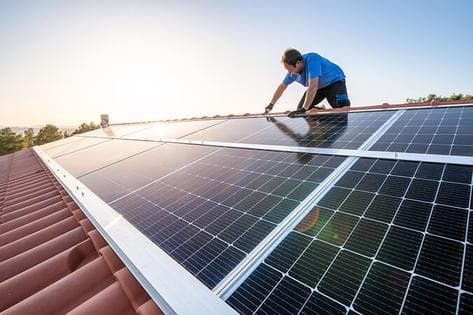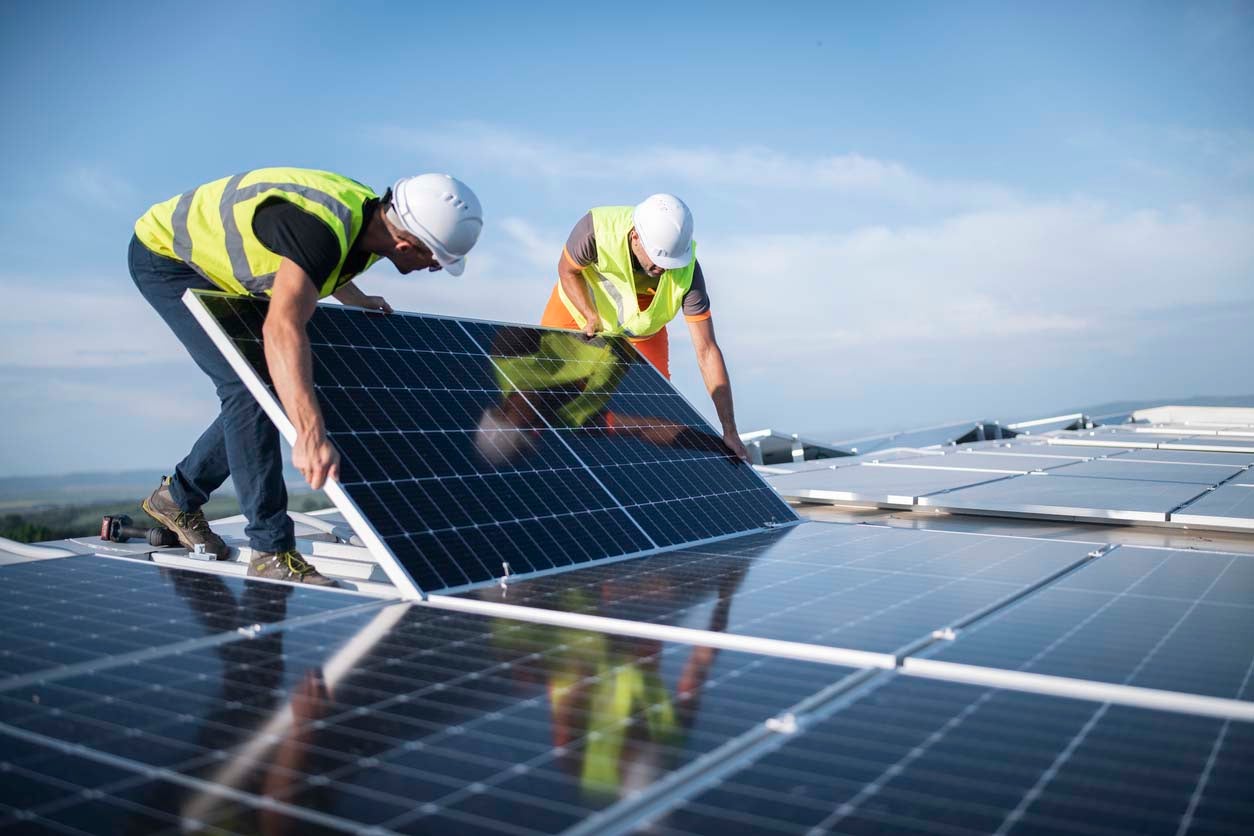Virginia Solar Power Company: Lumina Solar Focuses On Supplying Advanced Photovoltaic Solutions For Residences And Services
History and Establishing
Have you ever questioned how a solar panel company springs from a mere spark of motivation into a powerhouse of eco-friendly energy? It frequently starts with a vision-- one fueled by a mix of innovation, determination, and a pinch of serendipity. The journey of numerous solar business mirrors the evolution of the innovation itself: from large, inefficient panels to streamlined, high-efficiency marvels harnessing the sun's bounty.
The Early Days
In the late 20th century, when solar energy was still a niche concept, leaders planted seeds for what would end up being a global motion. Envision a small workshop filled with curious engineers, relentlessly exploring with photovoltaic cells. Their enthusiasm was palpable, frequently driven by a desire to combat climate modification and minimize reliance on nonrenewable fuel sources.
One such anecdote is about a founder who, influenced by a camping journey, realized that even in remote locations, the sun might power important gadgets. This simple observation sparked a company's mission to equalize access to clean energy.
Founding Principles

- Innovation: Continuously pressing the borders of solar technology to enhance effectiveness and toughness.
- Sustainability: Dedicating to environmentally friendly manufacturing and lowering carbon footprints.
- Availability: Making sustainable energy options budget-friendly and practical for daily users.
Turning points in Development
| Year | Secret Occasion |
|---|---|
| 1985 | Business founded in a little garage, focusing on research and advancement. |
| 1995 | Very first industrial photovoltaic panel product released, gaining local attention. |
| 2005 | Broadened to international markets, accepting international renewable resource objectives. |
| 2015 | Introduced advanced photovoltaic panel innovation with boosted energy conversion. |
Isn't it remarkable how these incremental actions, often overlooked, form the energy landscape today? The photovoltaic panel company story is not practically innovation; it's about a ruthless mission for a brighter, cleaner future.

Developments in Photovoltaic Panel Technologies
Ever seen how some photovoltaic panels shine brighter and last longer? It's not magic; it's the science of photovoltaic performance. Modern solar panel companies invest heavily in innovations like bifacial cells, which capture sunlight from both sides, increasing energy harvest without broadening roof area. Have you ever wondered why some panels perform better on cloudy days? That is because of advances in thin-film solar innovation, which flourishes under diffused light conditions.
Item Variations Customized to Distinct Requirements
One size never fits all. Solar panel companies now provide:
- Monocrystalline panels for maximum efficiency and sleek looks, perfect for space-constrained rooftops.
- Polycrystalline panels, which provide a cost-efficient option without compromising too much output.
- Building-integrated photovoltaics (BIPV), merging solar tech perfectly into architectural components like windows and facades.
Picking the right product isn't simply about in advance expense; it's about matching your environment, energy objectives, and long-term cost savings. For example, homes shaded by trees require panels that excel in low-light situations, something many neglect until energy bills climb up suddenly.
Technical Tips for Optimum Selection
- Assess the temperature coefficient-- lower values indicate panels lose less performance on hot days.
- Search for panels with enhanced anti-reflective coverings to optimize light absorption.
- Consider the panel's guarantee not just for flaws, however for guaranteed power output over years.
- Don't ignore the value of the inverter technology coupled with the panels; it can make or break your system's performance.
Beyond Panels: Emerging Patterns
Picture photovoltaic panels that change their angle instantly to chase after the sun-- tracking systems are ending up being more accessible, increasing yield substantially. Or solar tiles that blend invisibly into your roofline, transforming your home into a quiet, self-sufficient power generator. These developments are improving what a solar panel business provides-- not simply products, but incorporated energy services.
Market Presence and Global Operations
Ever question why some photovoltaic panel companies appear to sprout up in every corner of the world while others hardly make a ripple? The difference lies not just in technology but in mastering the art of navigating varied markets. Broadening internationally is like planting seeds in various environments-- you must understand each environment's unique conditions to thrive.
Take, for example, the intricate dance of logistics and supply chain management. Delivering panels halfway throughout the world isn't simply about distance; it's about timing, customs, tariffs, and adapting to regional demand variations. A company with robust international operations expects these variables, guaranteeing panels get here on schedule without pumping up costs. This foresight is no small accomplishment and frequently separates industry leaders from fans.
Key Methods for Expanding Market Existence
- Localized manufacturing: Developing production hubs near target audience reduces shipping hold-ups and import complexities.
- Strategic collaborations: Collaborating with regional companies accelerates market penetration and constructs trust.
- Adaptive product style: Customizing solar panel tech to weather, sun strength, and facilities subtleties boosts efficiency and approval.
What about the human aspect? Photovoltaic panel companies running internationally must reconcile cultural distinctions and regulative subtleties without forgeting their core mission. What works in a sun-drenched desert may fail in a damp seaside area. In some cases, the most innovative option is simply listening-- absorbing regional insights to fine-tune innovation and method.
Experts frequently advise a phased rollout rather than a shotgun growth. Why risk overextension when measured development develops sustainable momentum? Scaling carefully suggests balancing aspiration with functional strength - Solar Panel Installation Virginia. In the race for sustainable energy supremacy, patience can be as valuable as speed.
Ecological Impact and Sustainability Practices
When solar panels first emerged, many assumed they carried absolutely no environmental baggage. The truth is more nuanced. The production of solar batteries involves unusual earth metals and energy-intensive procedures, which can leave a substantial carbon footprint before the panels even reach roofs. Yet, the real environmental expense depends check here heavily on the sustainability practices used by the photovoltaic panel business throughout the lifecycle of their products.
How typically do we pause to consider what takes place to photovoltaic panels at the end of their helpful life? Unlike batteries or electronics, solar panels can last 25-30 years, however disposal and recycling pathways stay underdeveloped in numerous regions. A company committed to reducing ecological harm will have a robust strategy for recycling photovoltaic materials, restoring valuable silicon, glass, and metals to prevent land fill accumulation.
Secret Sustainability Strategies
- Making use of low-impact manufacturing strategies that lessen water and energy usage.
- Carrying out closed-loop systems to recycle production waste back into new panels.
- Taking part in transparent supply chain audits to ensure ethical sourcing of basic materials.
- Designing panels for much easier disassembly to aid future recycling efforts.
It deserves noting that some solar companies have actually pioneered ingenious techniques, such as integrating biodegradable parts or using less poisonous chemicals during fabrication. This not just lowers environmental pressure but likewise sets a precedent for the market. The concern stays: can the solar market genuinely pivot towards a circular economy model without sacrificing performance or cost?
Specialist Tips for Evaluating Sustainability
- Inquire about the company's commitment to carbon-neutral manufacturing and whether they balance out emissions.
- Examine if they partner with certified recycling facilities dedicated to photovoltaic panel waste.
- Try to find openness reports detailing ecological impacts and sustainability goals.
- Consider the durability and warranty of panels as an indirect measure of resource efficiency.
In the end, going with solar power needs to indicate more than just slashing electricity expenses; it has to do with supporting a future where energy is harvested properly and waste is attentively handled. Solar panel companies that accept this philosophy not just illuminate homes however likewise cast a brighter light on sustainable innovation.